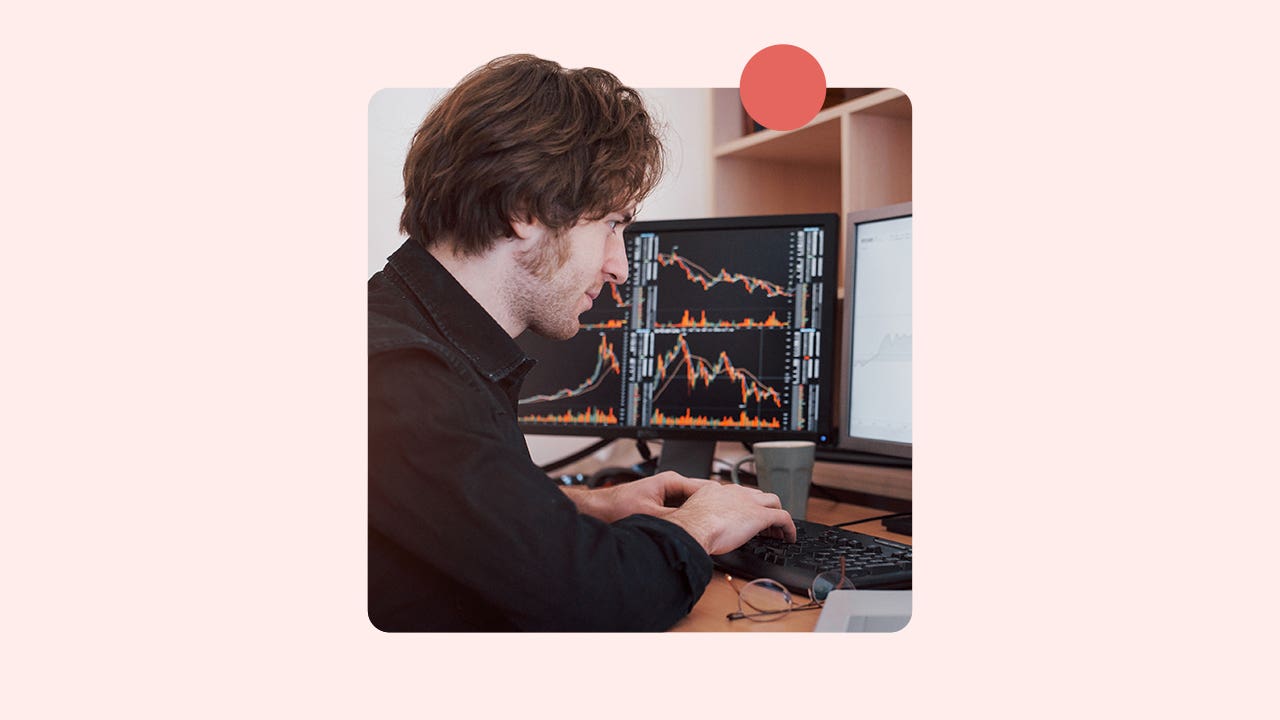
standret/GettyImages; Illustration by Bankrate
Shares are unstable. That a lot is known by most traders, however what precisely is volatility and the way is it measured for the general inventory market? You might have seen references to one thing referred to as the VIX, an index that measures volatility, throughout instances of maximum monetary stress. Understanding all of it might be sophisticated, so let’s take a better have a look at what it means.
What’s the Cboe Volatility Index (VIX)?
The VIX is an index run by the Chicago Board Choices Change, now generally known as Cboe, that measures the inventory market’s expectation for volatility over the subsequent 30 days based mostly on choice costs for the S&P 500 inventory index. Volatility is a statistical measure based mostly on how a lot an asset’s value strikes in both route and is usually used to measure the riskiness of an asset or safety.
The VIX, which was first launched in 1993, is usually referred to as the “worry index” as a result of it may be utilized by merchants and traders to gauge market sentiment and see how fearful, or unsure, the market is. The VIX usually spikes throughout or in anticipation of a inventory market correction. The upper the VIX goes, the extra unstable issues are anticipated to be.
In March 2020, as issues across the COVID-19 pandemic took maintain and its affect on the financial system was unknown, the VIX reached an all-time excessive of 82.69. This peak surpassed its earlier excessive of 80.86, which was reached in the course of the fall of 2008 as the worldwide monetary disaster was wreaking havoc on markets. For many of its existence, the VIX has typically sat someplace between the degrees of 10 and 30.
How volatility is measured
The VIX makes an attempt to measure volatility over the subsequent 30 days, however it doesn’t achieve this exactly. A VIX stage of 25 doesn’t imply that volatility will common 25 % over the subsequent month or so. In truth, research on the VIX have proven that it tends to overestimate volatility by a median of 4 or 5 %. However the research additionally present that there’s some predictive worth within the VIX. Listed below are some easy pointers for what the VIX stage is implying about future volatility:
- VIX of 0-12: When the VIX is at this stage volatility is predicted to be low. For context, the bottom day by day closing worth for the VIX was 9.14 in November 2017.
- VIX of 13-19: This vary is taken into account to be regular, and volatility over the subsequent 30 days when the VIX is at this stage could be anticipated to be regular.
- VIX of 20 or larger: When the VIX will get to be above 20, you may count on volatility to be larger than regular over the subsequent 30 days. This stage is often reached throughout instances of market stress equivalent to when there are issues about an financial slowdown or recession. Throughout excessive market occasions just like the monetary disaster or the onset of a world pandemic, the VIX might attain ranges of fifty or larger.
It ought to be famous that these are tough pointers ⏤ sudden occasions can throw a wrench into markets and a low VIX stage at the moment may very well be adopted by a interval of maximum volatility if circumstances change.
Are you able to put money into the VIX?
Investing within the VIX straight is just not potential, however you should buy ETFs that monitor the index as a solution to speculate on future adjustments within the VIX or as a device for hedging. This isn’t one thing that may make sense for many traders who’re working to fulfill a long-term purpose equivalent to saving for retirement.
However for individuals who are extra inclined to commerce and speculate, ETFs that monitor the VIX could be a useful gizmo. When uncertainty and worry hits the market, shares typically fall, and your portfolio might take successful. However due to how they’re constructed, even the most effective volatility ETFs have a tendency to say no in worth over time, even when they do spike larger in instances of intense volatility.
Backside line
The VIX is an index that measures expectations about future volatility. It tends to rise throughout instances of market stress, making it an efficient hedging device for energetic merchants. Although it might probably’t be invested in straight, you should buy ETFs that monitor the VIX. When its stage will get to twenty or larger, expectations are that volatility shall be above regular over the approaching weeks.
Editorial Disclaimer: All traders are suggested to conduct their very own unbiased analysis into funding methods earlier than investing choice. As well as, traders are suggested that previous funding product efficiency isn’t any assure of future value appreciation.





